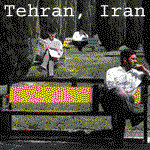Cold War Data Being Reclassified to Conceal US Arsenal Info
WASHINGTON, 22 August 2006 — During America’s Cold War with the former Soviet Union, which ended December 1989, it was well known among defense experts that the US nuclear arsenal included 1,000 Minuteman missiles, 54 Titan missiles and 656 submarine-launched ballistic missiles.
The Bush Administration has now begun designating as secret some information the government long provided even to its enemy, the former Soviet Union: the numbers of strategic weapons in the US nuclear arsenal during the Cold War.
These nuclear arsenal figures have been removed from previously public documents by government employees who say they pose a national security threat, according to the National Security Archive, a public research institution at George Washington University.
The Pentagon and Energy Department have treated as national security secrets the historical totals of Minuteman, Titan II and other missiles, blacking out the information on previously public documents, according to a new report by the National Security Archive.
“The Bush administration’s penchant for government secrecy has troubled researchers and bred controversy over agency efforts to withhold even seemingly innocuous information,” said yesterday’s Washington Post.
“The National Archives was embroiled in scandal last spring after the disclosure that, for years, the agency, had failed to reveal a reclassification program by the CIA, Air Force and other agencies to withdraw thousands of records from public shelves.”
“It would be difficult to find more dramatic examples of unjustifiable secrecy than these decisions to classify the numbers of US strategic weapons,” wrote William Burr, a senior analyst at the archive, a nonprofit research library housed at George Washington University. “The Pentagon is now trying to keep secret numbers of strategic weapons that have never been classified before.” And under a decision from a federal judge in Virginia, anyone who reads the once-public documents or who has access to the newly classified version could be prosecuted for possessing sensitive information, according to Thomas Blanton, director of the archive.
Michael Krauss, a professor of law at George Mason University in Virginia, said Ellis’ opinion is a “bit far-fetched” to say that anyone who reads the archive’s report revealing the facts and figures about the US Cold War arsenal could be in jeopardy of prosecution, Krauss said. It also is unlikely that every copy of the documents was scooped up and branded “classified,” he said.
Krauss predicts that the ruling will be appealed and settled by the US Supreme Court.
Maj. Patrick Ryder, a Pentagon spokesman, said officials strive to properly apply rules governing what should be classified and are researching why the missile information cited in the archive report was blacked out.
“The Department of Defense takes the responsibility of classifying information seriously,” he said.
“This includes classifying information at the lowest level possible.” Additionally, US District Court Judge T.S. Ellis III ruled last week that even private citizens could be prosecuted for the unauthorized receipt and disclosure of sensitive and classified information concerning national security.
Ellis issued his ruling as part of an ongoing case against two former lobbyists for the American Israel Public Affairs Committee who are charged with receiving classified information from a Defense Department analyst and passing the information to the Israeli government and several newspaper reporters.
Steven Rosen and Keith Weissman are the first civilians charged under the 1917 Espionage Act, and their case is raising concerns among lobbyists who trade information for a living as well as researchers and journalists.














0 Comments:
Post a Comment
<< Home